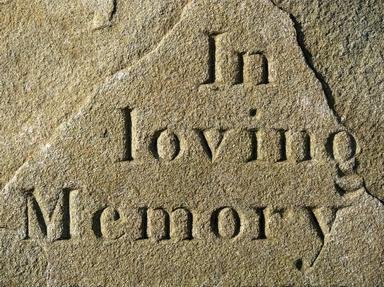Quiz Answer Key and Fun Facts
1. Buried in Stratford-upon-Avon, whose epitaph is a curse that includes the lines, "Blessed be the man that spares these stones, and cursed be he that moves my bones"?
2. "Under the wide and starry sky, dig the grave and let me lie" forms part of whose epitaph that can be found on a Pacific (treasure?) island?
3. Whose epitaph is the following verse from their own poem, written about a man they encountered whilst imprisoned for gross indecency?
"And alien tears will fill for him
Pity's long-broken urn,
For his mourners will be outcast men,
And outcasts always mourn"?
4. Although she had used her trademark wit to suggest "Excuse my dust" for her epitaph, whose final resting place is instead marked by a verse that contains the phrase, "She is happy for she knows that her dust is very pretty"?
5. After writing more than 66 novels and creating two of the world's most recognised fictional detectives, who more than earned the rest referred to in their epitaph below?
"Sleep after toil, port after stormy seas, ease after war, death after life does greatly please"
6. Which author has two grave markers, one with his childhood nickname ("Ti Jean") on it, and the other with "The Road is Life" - a quote from one of his most famous books?
7. Writer of children's bedtime stories, who has the epitaph "Writer of songs and nonsense"?
8. Who, in their epitaph encouraged travelers (Gulliver perhaps?) to "imitate, if you can, one who, to his utmost capacity, strenuously championed liberty"?
9. "Is all our life, then, but a dream?" is the epitaph on a memorial in Westminster Abbey dedicated to which author? The memorial's circular design resembles a rabbit hole, alluding to an incident in the author's most famous tale.
10. Which author included the basic tenets of their fictional 'Earthseed' religion ("All that you touch, you change. All that you change, changes you. The only lasting truth is change. God is change") on their gravestone?
Source: Author
NickMc
This quiz was reviewed by FunTrivia editor
ponycargirl before going online.
Any errors found in FunTrivia content are routinely corrected through our feedback system.
